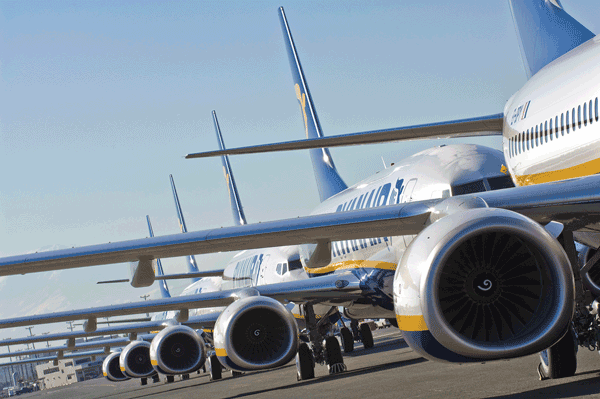
Boeing fixes its air condition
By Natural Resources Canada
Industry Operations Production Aerospace Manufacturing Boeing compressed air maintenance Manitoba Manitoba Hydro OperationsWinnipeg facility saves energy with redesigned compressed air system.
A redesigned compressed air system installed at Boeing Canada Winnipeg in 2014 has improved efficiency and delivered signifcant energy and air storage savings.
The aerospace composite manufacturer, which employs more than 1,600 people in three locations totalling 730,000 square feet, produces nearly 1,000 composite parts and assemblies such as wing to body fairings, engine strut forward fairings, engine strut aft fairings and landing gear doors, for Boeing Commercial Airplanes. All its products are exported and in 2013 the operation had sales of $511 million.
Parts are baked in large autoclaves pressurized with compressed air. An audit found the centrifugal compressors supplied only 3,000 cubic feet per minute (cpm), despite two additional autoclaves having increased the demand to 5,500 cfm, and there were high peaks and low valleys during normal production.
When not in production mode, the two compressors entered a very inefficient blow-off mode. The additional autoclaves would have required the use of a third compressor and the purchase of a fourth.
The capacity issues presented an opportunity to install a new system with four rotary screw compressors (two 225-hp VSD and two 100-hp base), plus two booster compressors (50-hp high pressure).
Consumes less electricity
Rather than running the compressors continuously to supply the autoclave, air is now stored (up to 280 psi) in two large 25,000-US gallon receivers outside of the compressor room. When air is needed, receivers deliver up to 5,500 cfm, or the equivalent of 1,375 hp of capacity.
The demand management system designed by Manitoba Hydro monitors power peaks and turns off the booster compressors when they lead to increased peak demand charges, which reduces the cost of the stored air by about 25%. And oversized compressor piping is reducing piping pressure losses across the system.
An innovative sequencing system and accurate regulation of the VSDs controls the compressors. Usually, only one of the four main compressors is running while another one supplies fill air for the autoclave, which is supplemented by stored air as needed.
Staff also dealt with compressed air leaks and inappropriate end-use levels to reduce average air flow from 750 to 425 cfm.
The new system consumes about 669,000 kWh of electricity with a peak of 285 kVA, it’s much less maintenance- and energy-intensive, and it allows the autoclaves to be pressurized about three times faster than with the old system, which reduces run time. Compressed air is also used to operate other pneumatic equipment without a loss in pressure.
This article appears in the November/December 2015 issue of PLANT.

